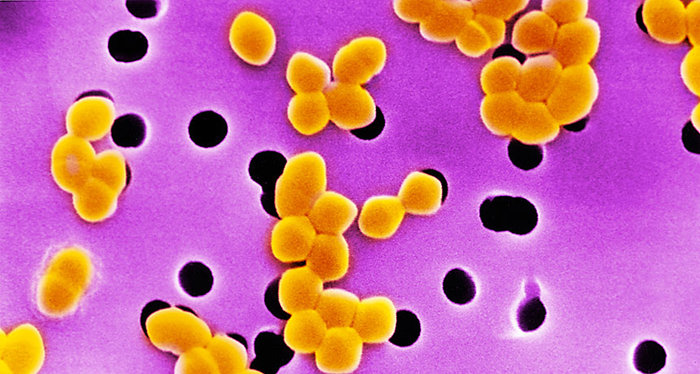That estimate could be off by as much as 25 percent, with the average number of bacteria ranging from 30 trillion to 50 trillion. Among individual people, the bacterial count could vary as much as 52 percent, say Ron Sender, Shai Fuchs and Ron Milo. With a fudge factor of 10 trillion to 20 trillion bacteria, the number of microbes may pretty well match the number of human cells in the body, which also varies somewhat. “Indeed, the numbers are similar enough that each defecation event may flip the ratio to favor human cells over bacteria,” the researchers write.
Scientists who study the microbiome, the collection of microorganisms that live in and on the human body, have peppered research papers with an estimate that bacteria outnumber human cells 10-to-1 or even 100-to-1. In recent years, those estimates have come into question, with the American Academy of Microbiology suggesting in 2013 that the real figure is probably closer to three bacterial cells for each human cell.
Judah Rosner, a molecular biologist at the National Institute of Diabetes and Digestive and Kidney Diseases in Bethesda, Md., called the 10-to-1 ratio a “fake fact” in a 2014 issue of Microbe. It probably wormed its way into scientific literature because it sounds good, Rosner says. “Everybody likes a nice, round number. And it had such impact. It was good PR.” But Rosner and others wondered where the number had come from in the first place.
Sender and Milo at the Weizmann Institute and Fuchs now at the Hospital for Sick Children traced the figure to a single, back-of-the-envelope calculation in a 1972 paper. The researchers combed scientific literature to come up with their own estimates of bacterial and human cell numbers.
Plenty of cocktail-party fodder is buried in the results. For instance, the team finds that red blood cells are the most numerous cells in the body, accounting for 84 percent of cells in the body by number. By weight, muscle and fat are the heavy hitters, making up 75 percent of cell mass. But those cells tend to be big and represent only about 0.1 percent of the human body cell number. As expected, most of the bacteria in the body — about 39 trillion — live in the colon.
Women tend to have smaller blood volume than men, so their bacteria-to-human cell ratio may be about 30 percent higher than that of men, the researchers calculate. Growing children probably fall within the range of bacteria-to-human cell ratios of adult men. Obesity doesn’t change the ratio much, the team calculates.
These estimates haven’t been checked by other scientists yet, but microbiome researchers say they appreciate the effort to examine the ratio. “Anytime people can add more precision it’s good,” says microbiologist Martin Blaser of New York University School of Medicine. The researchers didn’t do any experiments, and Blaser says others should begin measuring bacterial and human cell numbers to get an even more accurate number.
Other researchers point out that the new paper’s calculations considered only bacteria, while viruses, fungi, archaea and other microbes are also part of the human microbiome. Viruses vastly outnumber bacteria (SN: 1/11/14, p.18) and could skew the microbe-to-human cell ratio upwards, says Julie Segre, a geneticist at the National Human Genome Research Institute in Bethesda, Md., and a leader of the human skin microbiome project.
Most microbiome research has focused on how relative amounts of bacteria change between health and disease, but scientists don’t yet know whether the absolute amount of bacteria is also important, says microbiologist Ran Blekhman at the University of Minnesota, Twin Cities.
The reduced ratio in no way diminishes the effect bacteria have on human health, commenters told Science News. Most said it doesn’t matter what the real number is, just that it’s right. Besides, “one-to-one is pretty impressive,” Rosner says. “There’s as much of them as there is of us.”
More about:























-1745485667.jpg&h=190&w=280&zc=1&q=100)
























